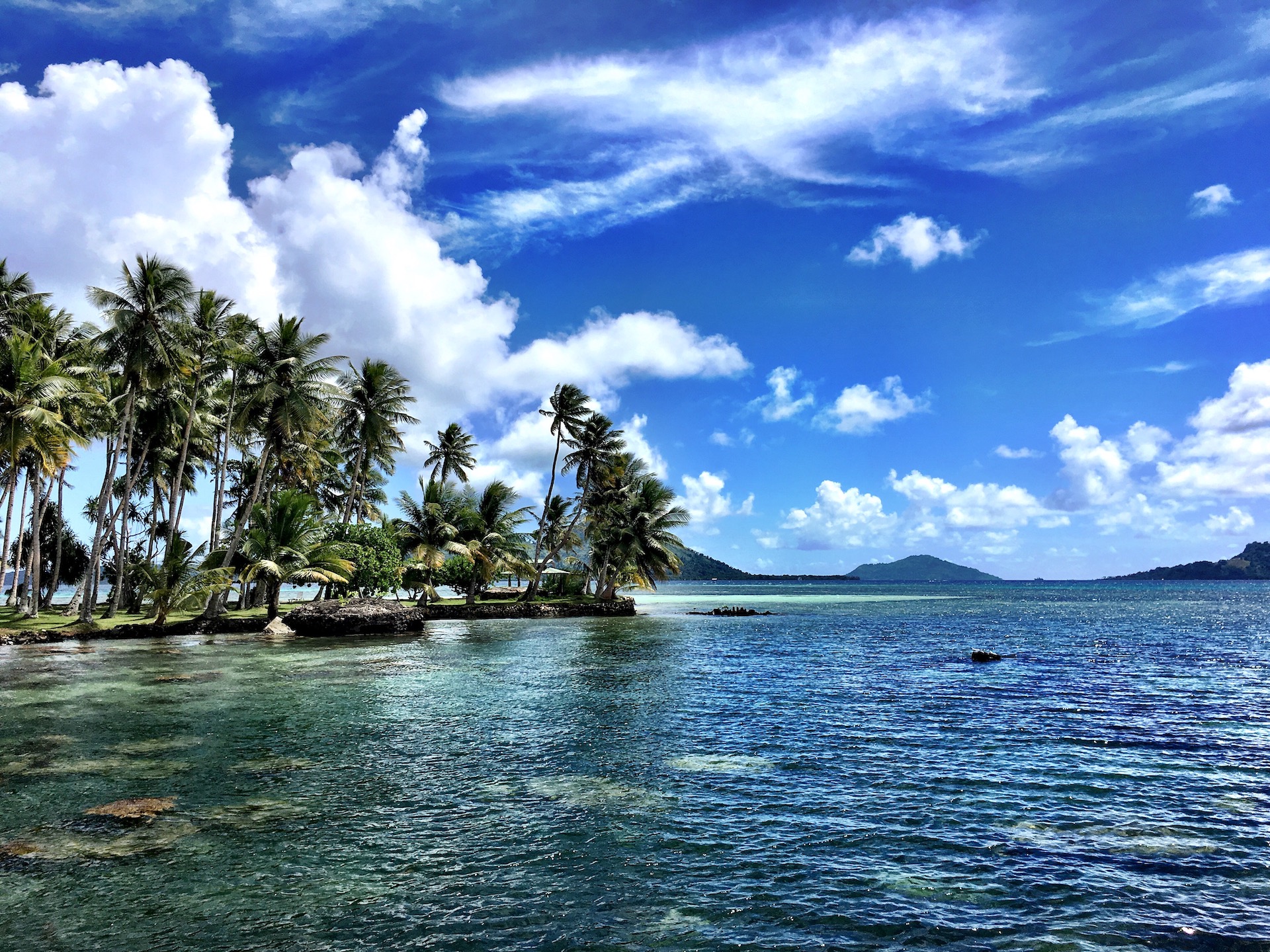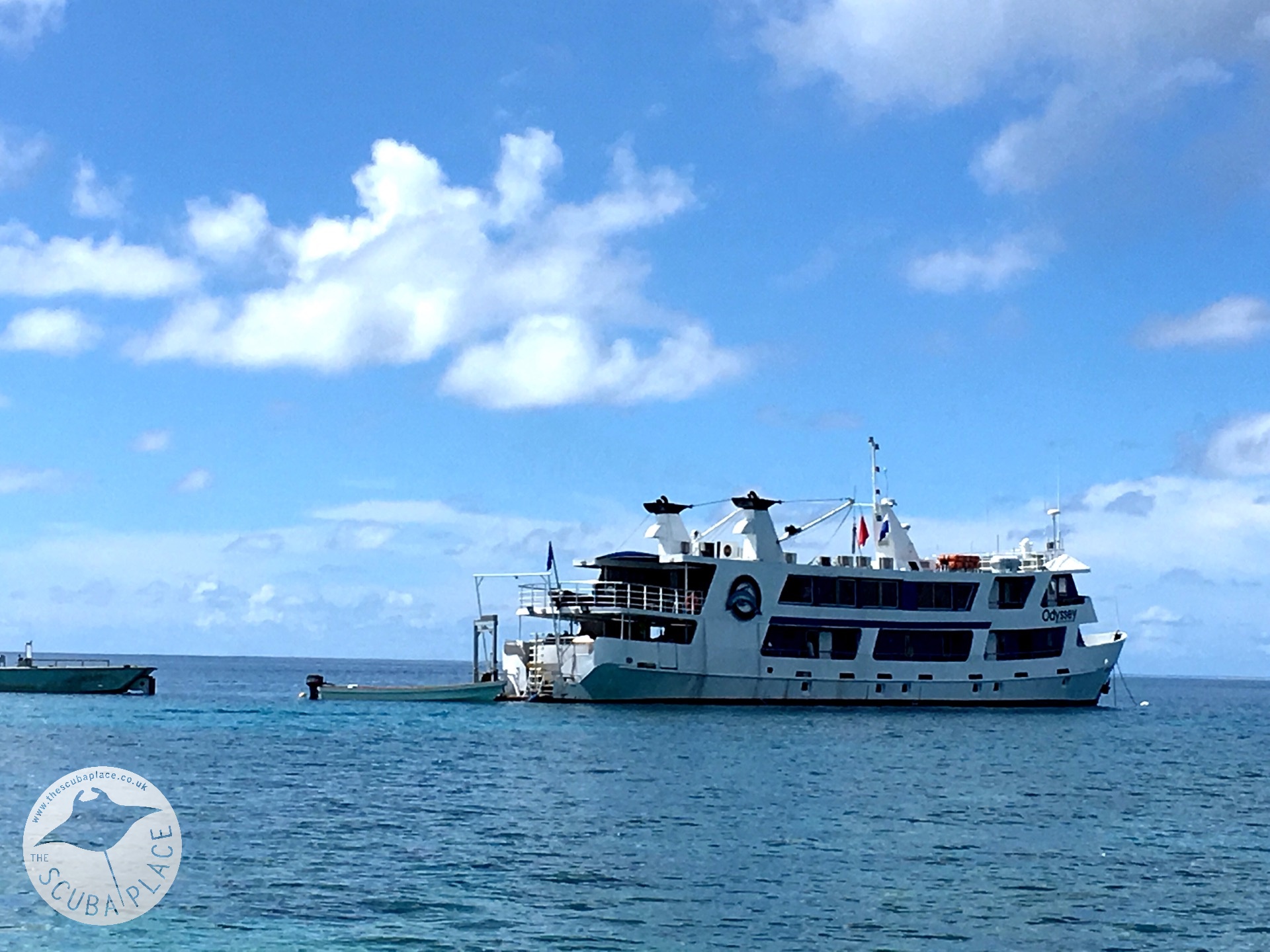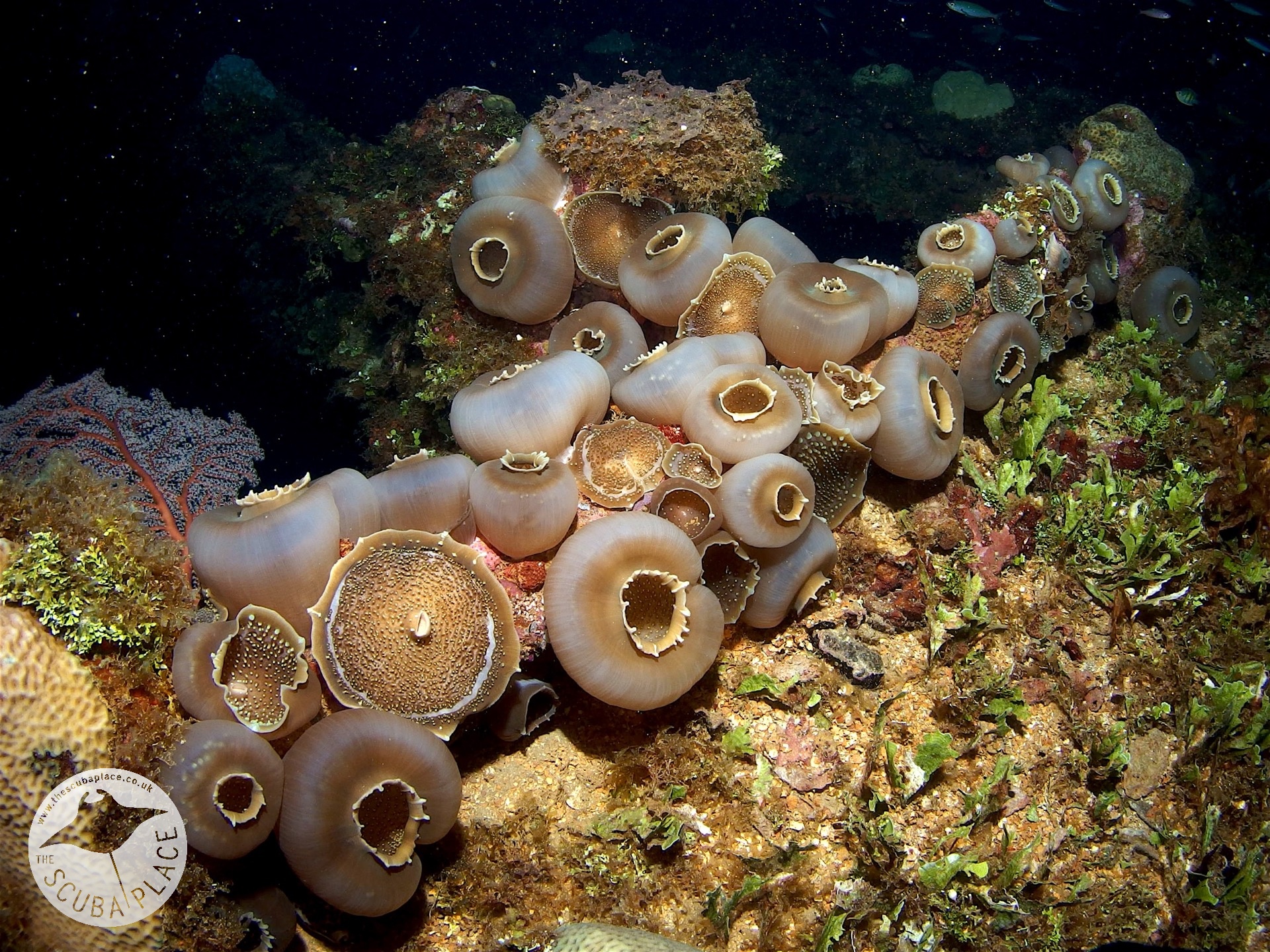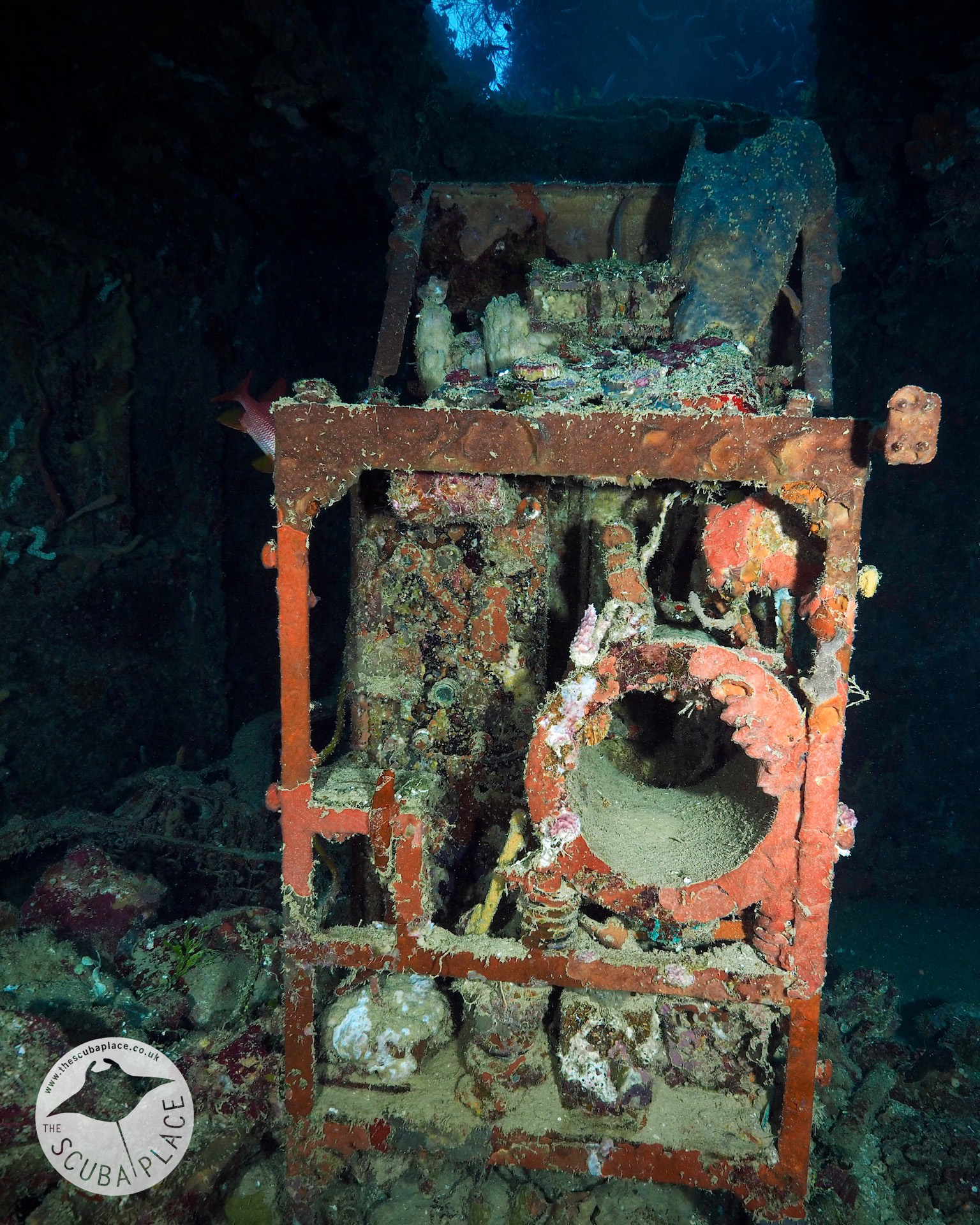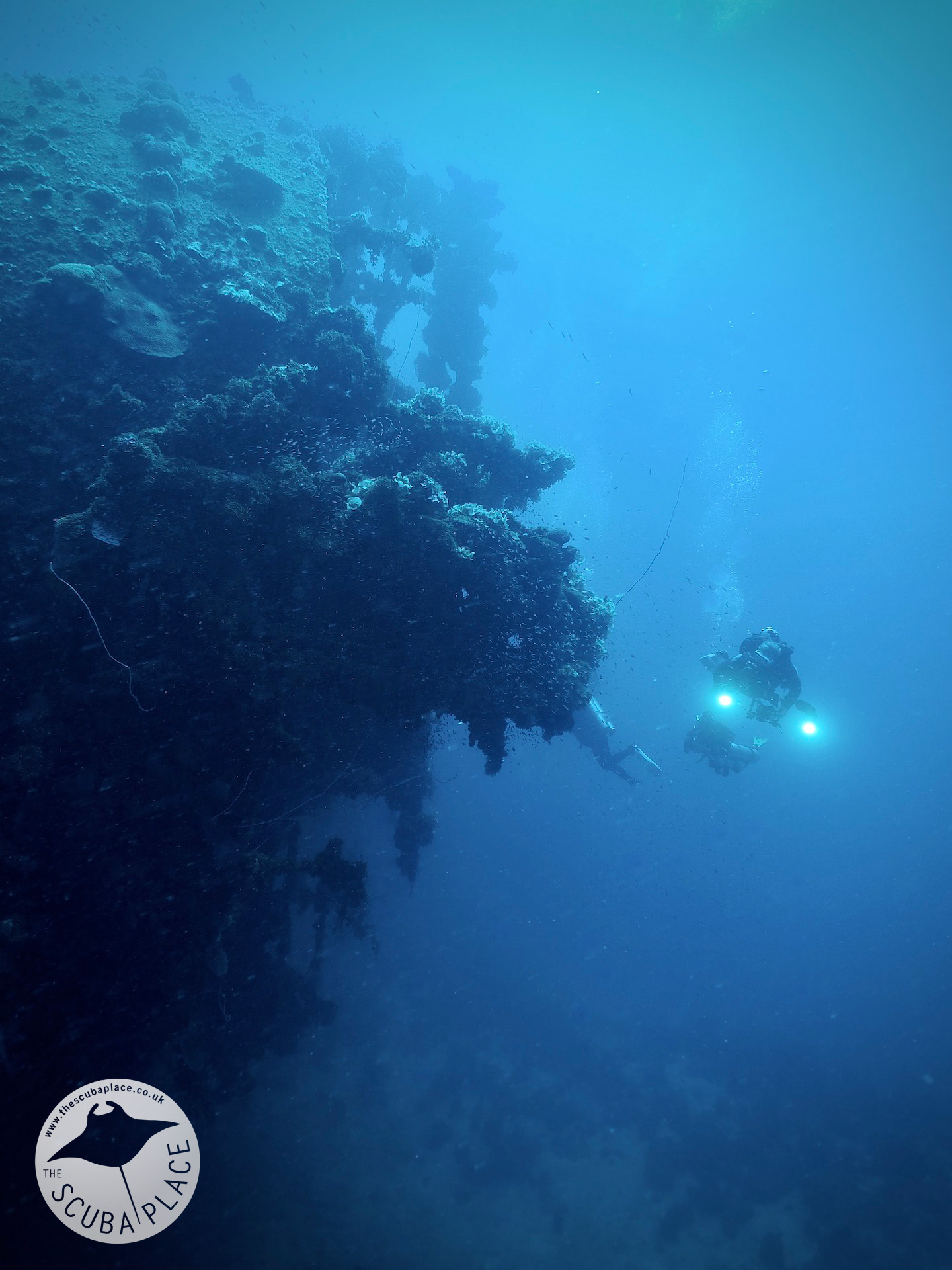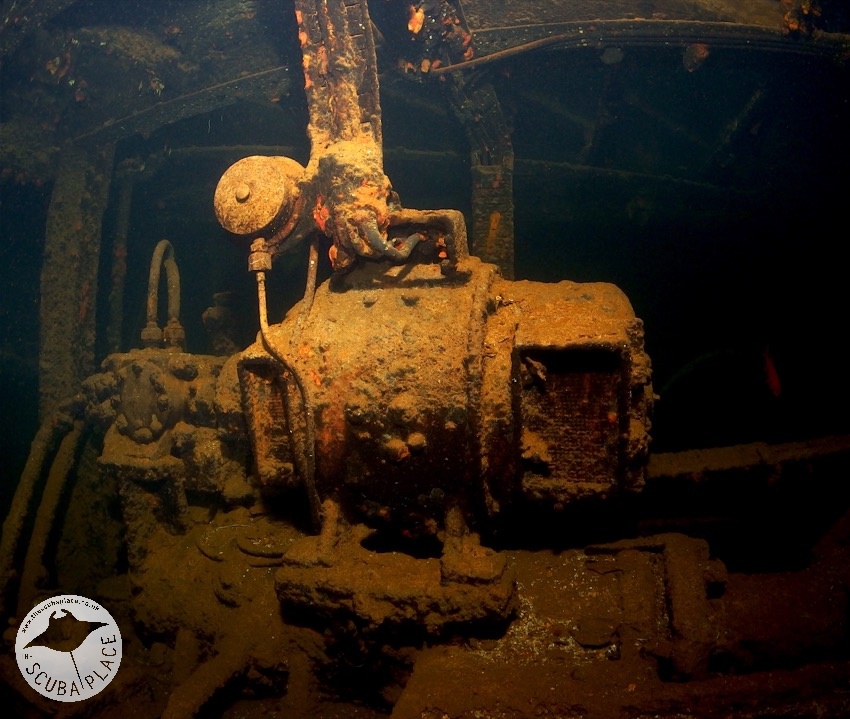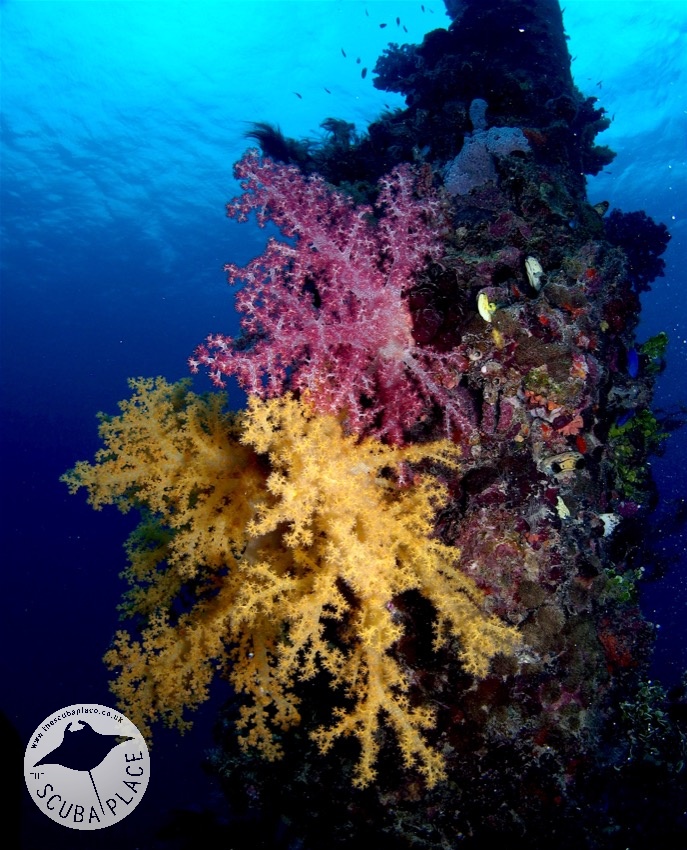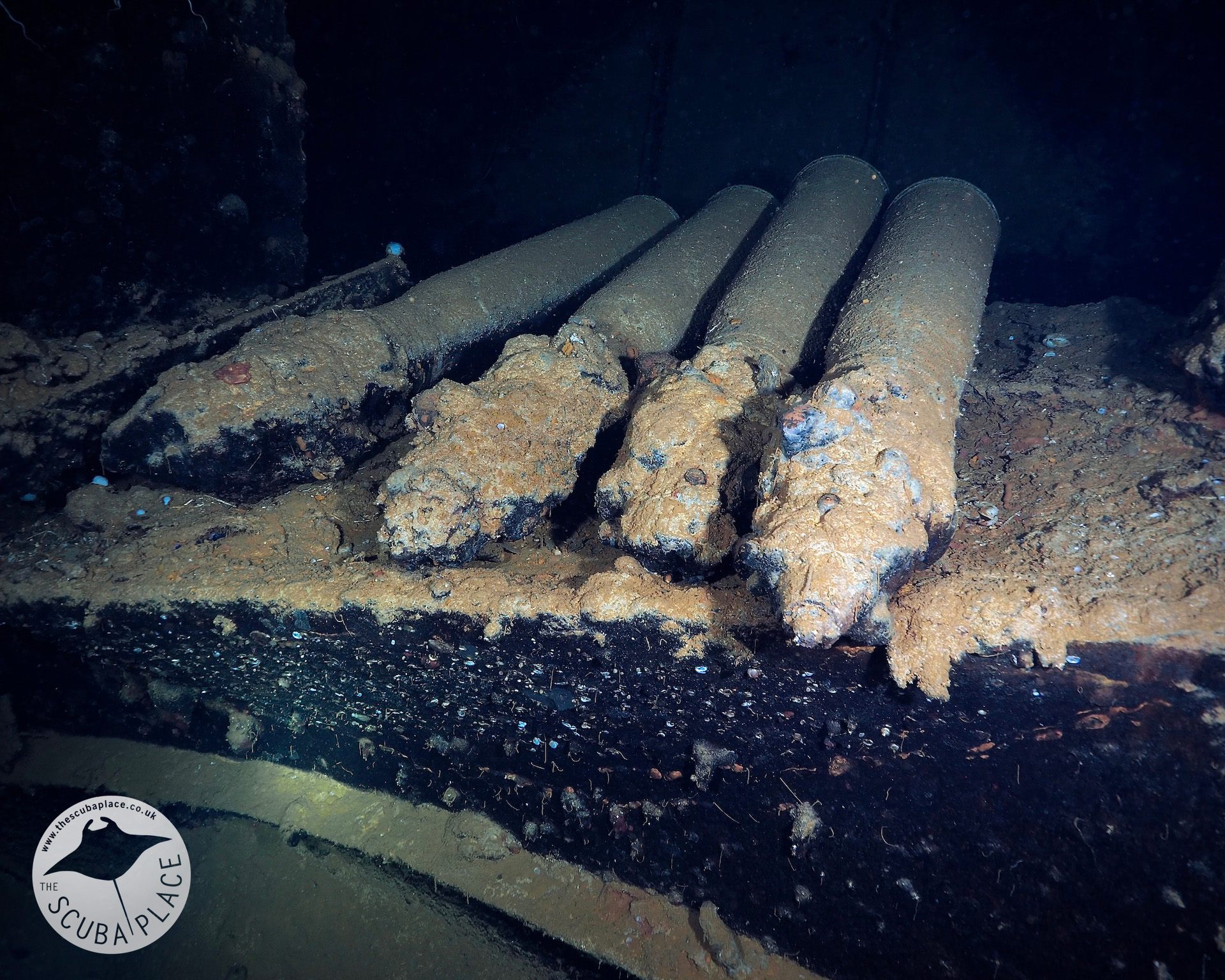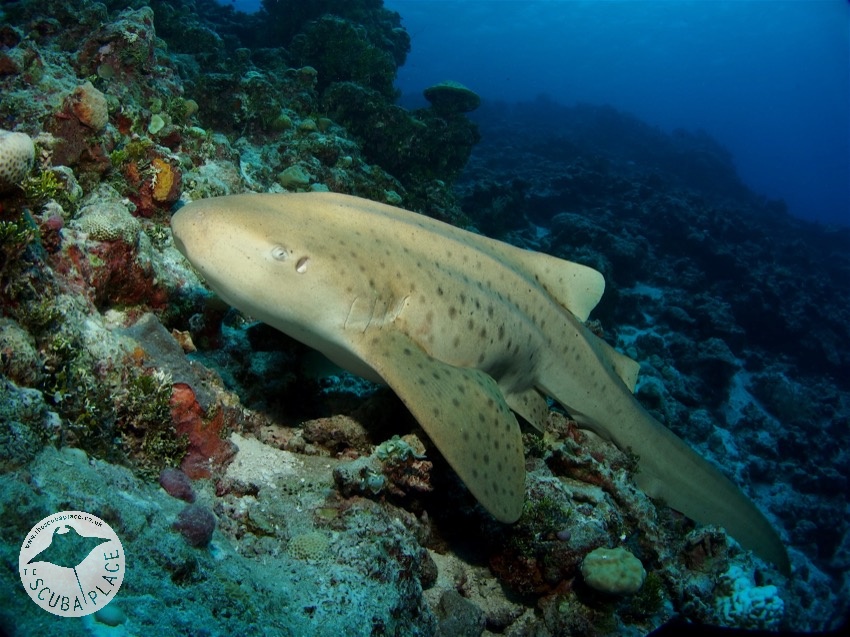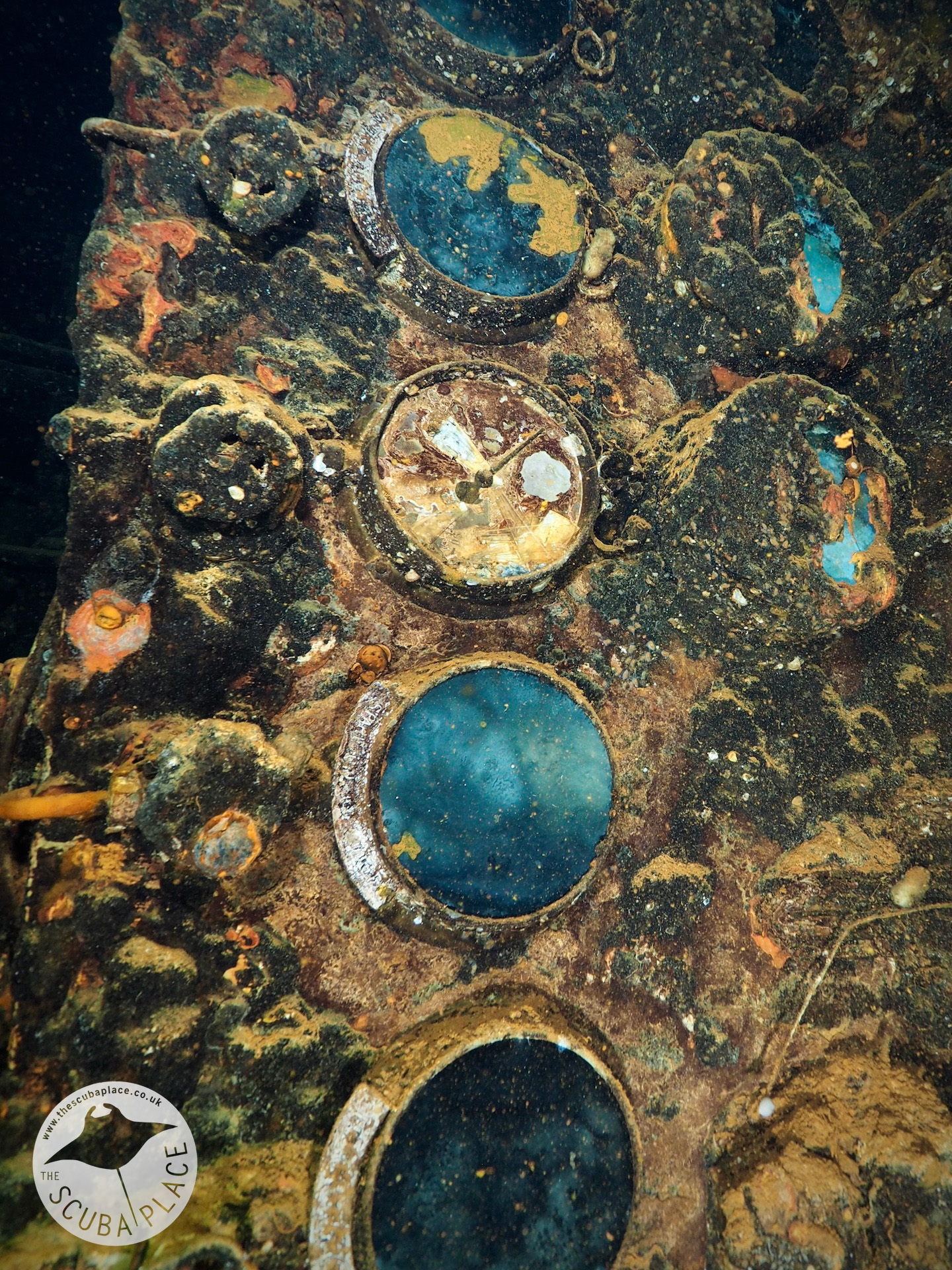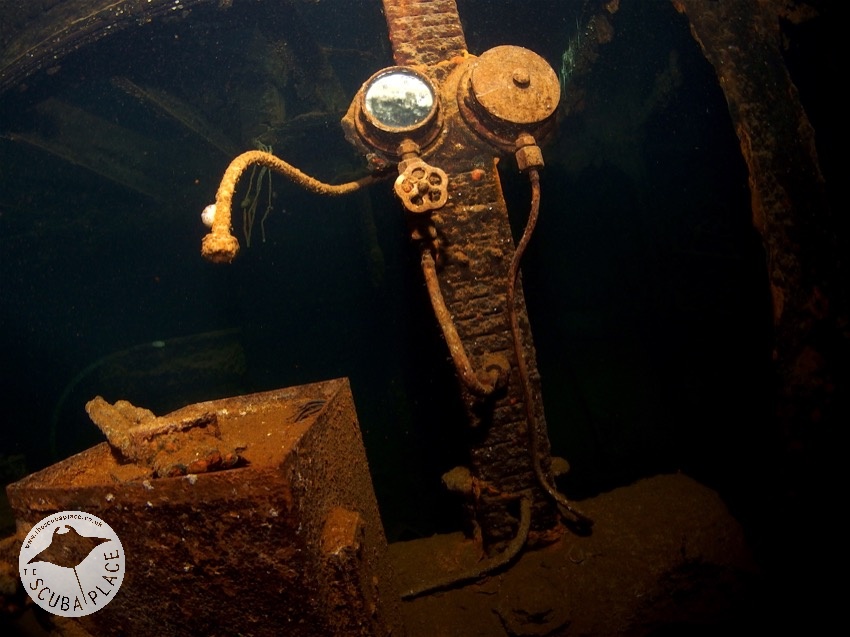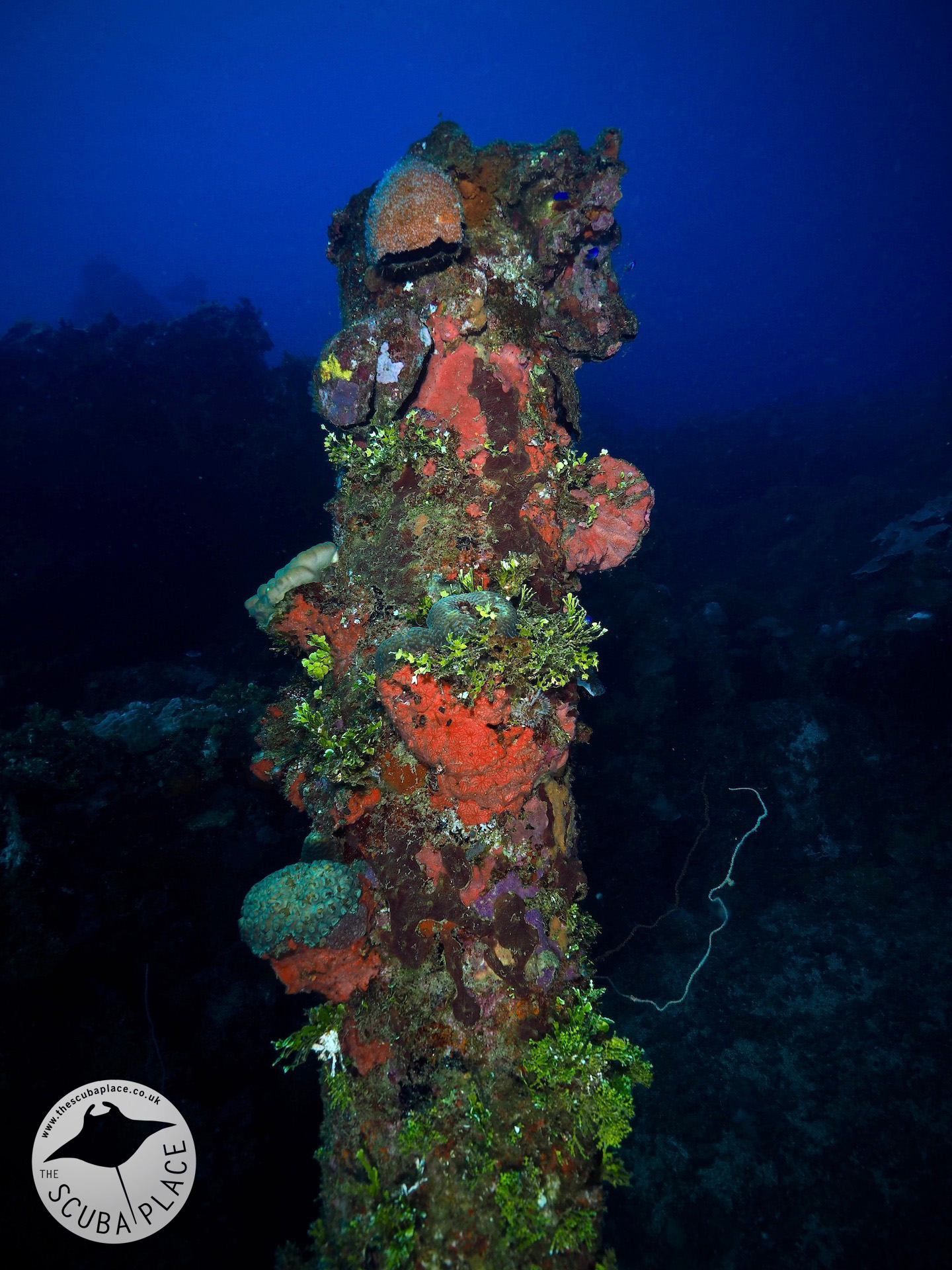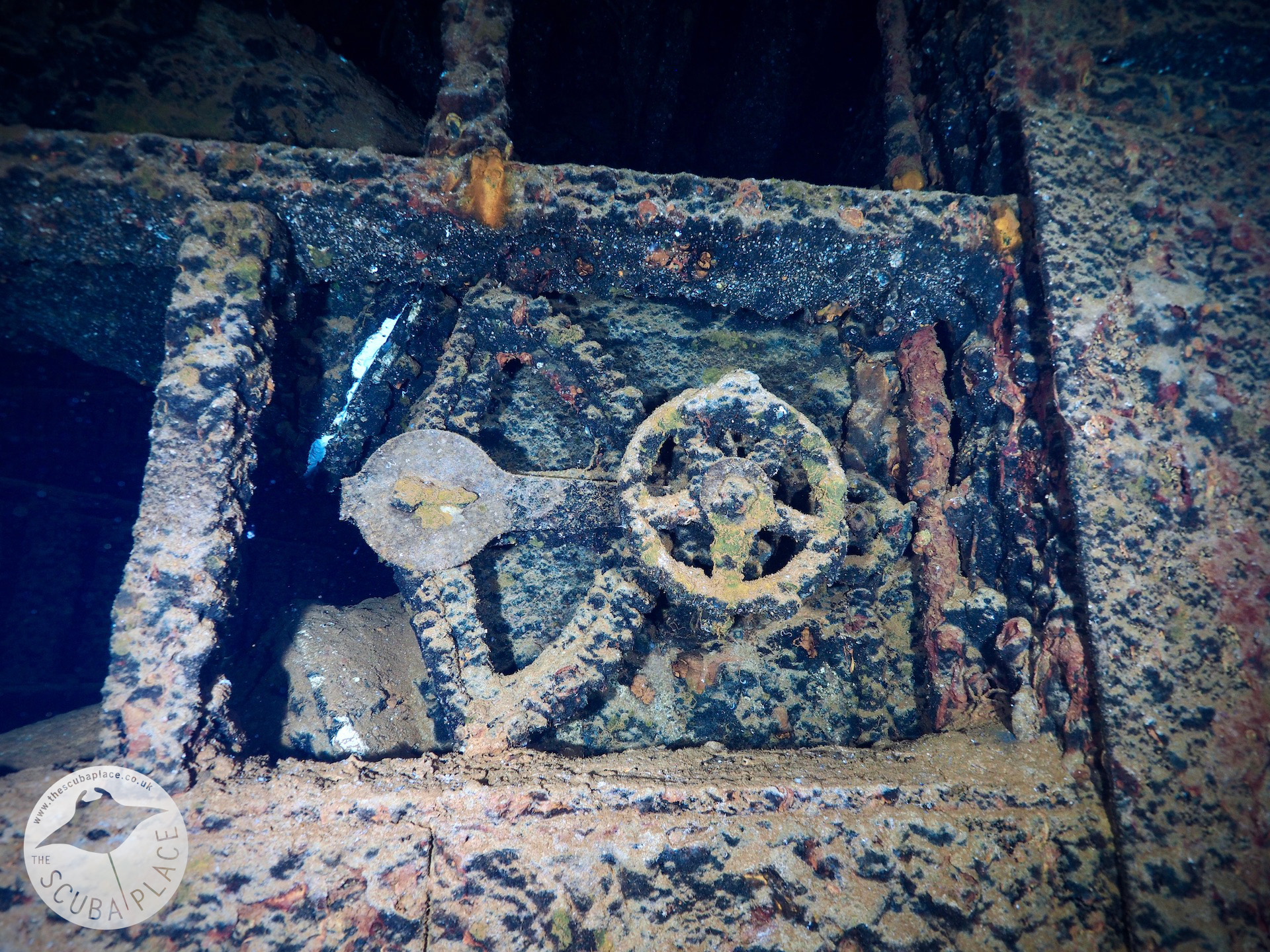Blogs
Truk Lagoon: A Trip of Myths, Legends, and Fables
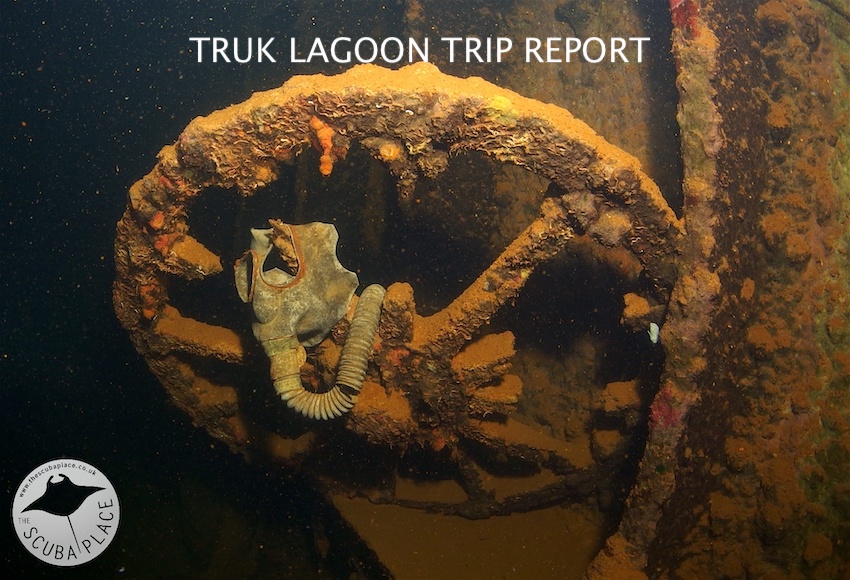
At The Scuba Place we love designing bucket list trips. Truk Lagoon is one of those destinations, and here are some of the things we hear when we mention Truk Lagoon : It’s deep, dark and squeezy… Only for technical divers… Only for seriously experienced divers… Only for wreck divers… It’s a long way…. And it’s expensive.
Well… they are TRUE and FALSE. It’s all relative! Trust me – I have been there several times, so let me share my insights on Truk Lagoon.
First, let me share some facts straight away – Truk Lagoon (or Chuuk to be accurate) is the resting place for a large number of Japanese cargo ships and a smaller number of Japanese Imperial Navy ships that were sunk on the 17th and 18th February 1944 during the US Navy airstrike known as Operation Hailstone. Often referred to as the ‘Revenge for Pearl Harbour’, Operation Hailstone is incredibly well-documented, and the dive guides and crew are experts in the story.
If you are interested at all in history, especially World War II history, then Truk is a perfect destination for you. The whole island and the lagoon are a real-life museum. The Japanese Fleet lost two light cruisers, three auxiliary cruisers, four destroyers, six auxiliary ships, 32 merchant ships and over 250 aircraft. Nine further vessels were damaged, and over 4,500 Japanese lives were lost in these two days. The US Forces, conversely, lost 25 aircraft and 40 lives with damage to two ships.
Yes, it is a long way…. Truk Lagoon is situated in Micronesia, a federation of islands in the North Pacific Ocean, northeast of Papua New Guinea, southeast of the Philippines and basically, a long way from anywhere! Getting there can be complicated, but there are numerous options, all of which end up in the US Territory of Guam before the flight to Chuuk.
Getting to Guam isn’t as difficult as it is often perceived – there are numerous options that make a trip to Truk perfect for adding in a second destination such as Australia, Philippines, Palau, or Yap. For our most recent trip in April 2023, we flew from London to Manila via Dubai with Emirates Airlines. A seven hour layover in Manila was followed by our flight to Guam and then Chuuk with United Airlines. Total travel time with four flights is around 32 hours.
So, it’s fair to say it is a long way, but the layover in Manila and overnight stay in a hotel in Truk before boarding the amazing liveaboard Odyssey make it a nicely paced trip. And using two mainstream airlines that understand long haul travel make it far easier than expected. We recommend the overnight stay as you don’t want a delayed or cancelled flight to mean missing boarding the liveaboard!
This year our arrival into Chuck was around 9am, and we were greeted by a tropical rainstorm, but getting off the plane, going through Immigration and collecting baggage was simple. The terminal is not much bigger than your local Co-op! Transport was waiting outside for us all, and it was a 10-minute jaunt through the rain and traffic to get us to the Truk Blue Lagoon Resort where we chose to stay overnight before the liveaboard. The hotel is well versed with the flight schedule, and 16 of us were checked in super-efficiently to our rooms within 10 minutes.
Truk Blue Lagoon Resort is one of our two choices when it comes to quality hotels in Chuuk. Board basis is room only, and meals are served in the main dining room. The food is decent and there is plenty of choice, but you can be waiting a while for your meal to arrive, especially if in a group. Rooms are comfortable, air-conditioned, and there is wi-fi in and around the accommodation blocks. It almost resembles a former military installation, but being situated right on the lagoon, it is the perfect base for 24 hours. Odyssey moors just 20 metres off the jetty at Truk Blue Lagoon, so you’ll see the liveaboard when you arrive. Truk Stop is the other hotel we recommend and is a great option.
After our arrival it was lunch, sleep, dinner, more sleep, and by the next morning we were fully refreshed and ready to go. Boarding Odyssey takes place at around 5pm, so we had a day at leisure. The Operation Hailstone Museum is right next to the hotel, and well worth a visit for the history buff. Others visited the local dive shops and stocked up on shiny stuff and tourist gifts, took a swim or snorkel in the lagoon, and two even went for a dive with the on-site operator. Others read, snoozed, and ate, and by late afternoon we were ready to jump on board Odyssey. A simple skiff ride took us and our baggage out to the liveaboard. At last, we were about to start our dive trip!
The Odyssey is a top quality liveaboard, and in our opinion, by far the best in Truk Lagoon. Sleeping 16 guests in and seven double or twin cabins and two single cabins, she has plenty of space to chill out and relax. Each cabin has a flat screen television complete with an extensive built-in movie library, an ensuite bathroom and air-conditioning, together with plenty of storage space.
A large lounge with camera table and charging station and a huge saloon where meals are provided also offers space to chill out and relax – after all, this is where the bar is! Talking of the bar… board basis is all-inclusive, and the bar is very well stocked. Food is exceptional – full cooked and continental breakfast, mid-morning baked goods, a buffet lunch, mid-afternoon snacks and gourmet themed dinners – BBQ night, steak night, burger night, seafood night…. this is not the trip to try and diet!!!
All in all, the boat is super comfortable, and the food is exceptional – and this is exactly the way it was on previous trips. This is why we use the Odyssey; there is nothing worse than the disappointment of a second class offering when you finally get to your destination.
True – it is wreck diving. The wrecks are, pretty much without exception, in fantastic condition, and this is testament to not only the sea conditions, but to the preservation and conservation efforts of the local governing bodies and the dive operators. Some wrecks, more than others, are immense, and as they have been on the seabed for almost 80 years, are adorned with every species of coral you can think of. They have become, in the best sense, artificial reefs, complete with critters galore, and schooling marine life populating every deck, hold, stay and davit. Expect every reef fish you can think of, plus turtles, sharks, and much more – we even encountered a Leopard Shark!
False – it is not only for technical and super experienced divers. The vast majority, and I mean all bar but one of the wrecks, are well within recreational limits with Deep Diver Certification. Throughout the week, most of the wrecks are at a maximum of 40 metres – there are one or two deeper, and planned deco dives on the San Francisco at a depth of 50 metres at the deck, and 62 metres to the seabed are made later in the week. And we managed to stay away from deco by using the well-blended Nitrox mixes, giving us good bottom time for each individual wreck.
The diving isn’t for the novice, but you don’t have to be a tech guru either. It is consistently deep, but not excessively deep, and care must be taken – knowing how to use your computer is imperative, and understanding NDCLs, the effective use of Nitrox, and possessing really good buoyancy skills are imperative – but you can have fins of any colour, don’t need to carry 4 cylinders, and don’t need a camouflage wetsuit – recreational divers are very well catered for, and are very welcome.
There are some wrecks here with deck space that you cannot cover in one dive they are that big, let alone penetrate, so diving with a guide is a great thing to do. They are truly expert and know the best places inside and outside of the wrecks to visit. Mini museums litter the decks, with cutlery, crockery, wine, beer and sake bottles, even gas masks laid out to see. Cargo holds full of ammunition, trucks, aeroplane parts, hospital equipment… like the Thistlegorm, but on steroids and wearing big-boy pants!
It can be deep dark and squeezy, but only if you want. Penetration of many of the wrecks is easy – cavernous open cargo holds with easy entry and exit are common. The accommodation blocks, helm and signal rooms are easily accessed on some of the wrecks as well. Deeper penetration into the below deck holds and spaces, engine rooms and workshops are also available on pretty much every dive, so those lusting after squeezy gaps and dark places are incredibly well-catered for too!
The diving operation on Odyssey is second to none. Recreational, technical, trimix, CCR, side-mount, twinset, stages and pony bottles – all and more are available. Deco diving is commonplace for those who want to and are qualified to do so.
There are four to five dives available daily, including night dives. There is very little current to consider, and visibility can be excellent – it can be pretty grotty too, especially inside the wrecks when diver buoyancy might not be as good as it should be and bits of rust and sand are stirred up. Bring your best skills and choose your buddy well! A misplaced fin kick can ruin a dive for you and everyone else, and the exceptionally talented guides will normally take such an individual aside and educate them – gently!
Our skipper for the week was Captain Michael Gerken. Not only a phenomenal skipper, but an exceptional underwater photographer and documentary film maker. And it just so happens that he wrote and produced a documentary for the History Channel on Operation Hailstone. You can watch an excerpt of his film here. He uses his expertise, schematics, sketches, and actual video footage of the air raid in the dive briefings, and I for one would travel across the globe again just to sit in one of those! Dive site routes are planned, options offered, instructions given, and the pool is opened. It really is an exceptionally well-oiled machine.
This is meant to be a trip report, and not a history lesson, but there is plenty of information available online to find out more about the actual airstrike and the events leading up to and following Operation Hailstone. It is a fascinating story, and we suggest starting with Naval History and Heritage Command website here.
Our week came to an end far too soon, and it was time to leave the Odyssey. Some flew home with an overnight stay in Manila to provide enough time to collect baggage from United and check in with Emirates, and part of the group stopped off for a week of more diving in the Philippines. This is a phenomenal trip and lends itself well to adding in a second week, either prior to or after due to the flight routes.
So, in summary, Truk is a long way and can be deep, dark, and technical, but it is so much more! The marine life and corals are spectacular. The wrecks are so huge they are bigger than some of the reefs you may have dived. The journey there and back can be broken up into manageable chunks. Recreational divers will find themselves doing pretty much every dive except one, and price? You pay for what you get with this destination. This is THE best place on the planet in my opinion to experience not only amazing wrecks, but incredible history, surrounded by true experts, and to be looked after exceptionally.
It is a real privilege to dive these wrecks, to experience the story of Operation Hailstone in person, and to understand how it impacted the people of Chuuk – and it is also a great opportunity to learn more or use existing skills consistently throughout a whole week. There are few places in the world where this can be achieved.
Will we go again? Yes! On Odyssey – of course! Want to join us? Come Dive with Us March 2025!
Check out our brochure with full itinerary including an option to add on a week in the Philippines here.
Key Facts:
- Getting there: We selected to fly from London to Manila via Dubai on Emirates Airlines. After our layover in Manila and checking in with United Airlines we took our overnight to Chuuk via Guam. We checked into Truk Blue Lagoon Resort for one night before boarding the Odyssey liveaboard. Return flights first to Manila with an overnight stay near the airport followed by an early morning flight to London via Dubai arriving the same day. We had 30kg of checked baggage on Emirates and 2 x 23kg on United.
- Air temperature: Chuuk averages 24°C in the winter and 29° in the summer. We have travelled to Truk Lagoon in March and April and have enjoyed very tropical weather. The rainy season is May to September.
- Water temperature: Expect an average of 28°C year round.
- Visa requirements: A U.S. ESTA is needed to transit through Guam easily. An ESTA is a two-year electronic travel authorization that should be applied for no later than 72 hours before departure and costs $21USD. More information can be found here: https://esta.cbp.dhs.gov/. A Micronesia tourist visa is issued on arrival and authorised for the number of days requested but shall not exceed 90 days.
- Health protocols: When we travelled in April 2023 there were no health or COVID requirements in place.
- Currency: The U.S. dollar is the official currency. Most major credit cards are welcomed at Truk Blue Lagoon and on-board Odyssey.
- Electricity: S. type outlets with 110 volts standard.
- Internet and Wifi: Wifi was readily available at Truk Blue Lagoon and on Odyssey when we were closer to shore.
Accommodation: We spent one night at Truk Blue Lagoon, room only, before boarding the liveaboard. Seven nights on board the premium all-inclusive Odyssey. Nine staterooms with a maximum of 16 divers. All staterooms have private ensuite, air-conditioning and television with a full library of movies! The dive deck offers loads of space with personal dive lockers, rinse tanks and freshwater shower with warm towels and the ever-popular dive lift to lower you into the water or help you out at the end of a dive. 30% NITROX is available to qualified divers along with other technical mixes.
Diving: The water is warm, clear, and current free in the lagoon. Up to 5 dives a day are offered depending on location. A typical a day begins at 7am with a hot breakfast followed by the first dive briefing of the day. Two dives before lunch, then onto a new site. After lunch you can do another dive or relax. A late afternoon dive is offered with dinner served around 6:30pm. Choose to do a night dive or enjoy some entertainment in the lounge.
Price Guide: For our trip in April 2023 which we booked in 2020 pre-Covid, we paid £5,600 per person based on double occupancy for this bucket list 9-night itinerary. The ATOL-protected itinerary included flights from London to Chuuk with one night at Truk Blue Lagoon, seven nights on board Odyssey and one night in Manila on the trip home. All transfers are included.
Extras:
- US ESTA: Purchased online prior to departure for $21USD
- Food and drink: While staying at Blue Lagoon and overnight in Manila.
- Tips: This crew works hard! We suggest $200USD as a minimum.
Our Advice: This is an amazing destination that takes some time to get to, so we suggest adding a week in Yap, Palau or the Philippines on your way home. Let us help you design your dream diving holiday!
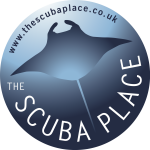 The Scuba Place designs and builds custom scuba diving holidays. With personal knowledge and experience diving in many of our destinations, there is no one better to help build your dream dive holiday. Come Dive with Us!
The Scuba Place designs and builds custom scuba diving holidays. With personal knowledge and experience diving in many of our destinations, there is no one better to help build your dream dive holiday. Come Dive with Us!
Call us at 020 3515 9955 or email at reservations@thescubaplace.co.uk
Find us on
Facebook : https://www.facebook.com/thescubaplace
Instagram : https://www.instagram.com/the.scuba.place/
YouTube : https://www.youtube.com/channel/UCH684OdioYirI-zzdT58Ceg
Blogs
Alonissos: The complete diving destination (Part 1)

In June we were incredibly fortunate to be invited to dive in Alonissos, a small Greek Island in the Sporades island chain located in the North Aegean Sea. While I have long been a big fan of the Greek Islands as a great holiday destination, I had not had the opportunity to do any diving on previous visits and Mike and I were extremely excited to see what Alonissos had to offer both above and below the surface!

The Sporades are easily accessible via the airport in Skiathos (the first island in the chain), which is served by Jet2 flights from all major UK airports from May through October. Numerous ferries and charter boats make island hopping from Skiathos Town a breeze. After an hour boat ride, the picturesque port of Patitiri was a wonderful introduction to Alonissos, where we were met by our gracious hosts Kostas of Albedo Travel and Dias of Alonissos Triton Dive Center. Mike and I were delighted to be staying at the Paradise Hotel, aptly named for its stunning views over the sea and great location for walking to the waterfront.

Alonissos is beautifully situated in the National Marine Park of Alonissos and the Northern Sporades, the largest marine protected area in Europe. The surrounding seas offer fabulous marine life, including incredibly rare species such as the Mediterranean monk seal. They boast deep walls covered in gorgonians and sponges, stunning topography with caverns, swimthroughs and pinnacles, and the first accessible ancient shipwreck from 500BC!

In locations where historical sites have been reported, the waters are largely restricted, but with collaboration between government, underwater archeologists and dive centres, incredible underwater museums are being created for a truly unique diving experience. Alonissos is home to the first of these, the Ancient Shipwreck of Peristera Accessible Underwater Archeological Site. The chance to dive into history (along with reports of healthy reef life and amazing underwater topography) meant Mike and I were keen to get in the water.

Our introduction to the diving around Alonissos was at the Agios Georgios Pinnacles, in the channel between Alonissos and Skopelos. This fantastic site was named “The Chimney,’ and proved to have a huge amount to see. We got to a decent depth here (over 25m), and marvelled at a colourful reef wall with a wonderful swim through whose rocky walls were absolutely covered with life. As well as brilliant topography there was no shortage of macro life here. We saw numerous nudibranchs, five different species in total. The second dive at Mourtias reef nearby was a shallower dive along a nice wall with lots of crevices. Several moray eels and grouper called this site home. We enjoyed looking in the crevices for lobster and smaller benthic life, such as cup corals and tunicates.

Our itinerary allowed us two dives a day with afternoons left to explore the island with our hire car and evenings to enjoy the famous Greek hospitality. This proved to be a lovely mix of in-water and land based diversions.

The next days diving to the Gorgonian Gardens and Triton’s Cave was to be even better! These two stunning sites are nothing short of fabulous. The Gorgonian Gardens was a deep wall near to the Agios Georgios islands. The ever-present currents in this deep channel meant that the sea life was amazing … the namesake Gorgonian sea fans dotted the wall at a depth of 30 to 50 meters, getting ever larger the deeper we went. Above 30m was by no means less beautiful, with sponges, corals, scorpionfish, moray eels and some rare and colourful nudibranchs.

The second shallower dive of the day was to Triton’s Cave or the Cavern of Skopelos, on the east side of that island. The spectacular rock formations had wild striations both above and below the water making a truly epic topography. The cavern entrance was at 14m, and big enough for a buddy pair, winding up to 6m and passing two beautiful windows out into the blue. Emerging from the cavern, the light at the shallower depths and the incredible rock formations made for a fantastic gentle swimming safety stop and we all surfaced by the boat with massive grins.

Check out our next blog :Alonissos: The complete diving destination (Part 2)” to hear about our amazing dive on the 2500 year old Peristera Wreck!
Thanks to:
Alonissos Triton Dive Center https://bestdivingingreece.com/
Albedo Travel https://alonissosholidays.com/activities/
Paradise Hotel https://paradise-hotel.gr/
Alonissos Municipality https://alonissos.gr/en/
Blogs
Mamma Mia! Diving Skopelos (Part 2)

Our second days dive itinerary was to the famous Christoforos wreck! This is arguably the best dive in Skopelos and though only open to divers with deep diving experience, this 83m long wreck is well worth the visit.
The Christoforos sits in 43 meters of water with the deck at 32 to 35 meters. A 30m dive can give an impressive view of the wreck, though such a large wreck needs a few dives to truly do it justice. Given its ideal location just a 2 minute boat ride from the dive centre dock it is an excellent first dive of the day. The sheltered site is also diveable in all but the absolute worst weather so although deep, the water is usually clear with little to no current making it a very pleasant dive. The site is superb for technical diving and a great training site for the Tec 40 and 45 programs, offered by Skopelos Dive Center.

The Christoforos wreck was originally a collier ship built in 1950 at Grangemouth shipyard under the name “Thomas Hardie”. In 1976 she joined the Greek merchant fleet as “Christoforos”. On the 2nd of October 1983 the Christoforos was carrying 2600 tonnes of cement from Volos to Piraeus Port. During the voyage the weather turned, resulting in the ship developing a 7 degree list, whereby she changed course for safe anchorage at Panormos, Skopelos. The ship reached Panormos at 16:00 with a list of 17 degrees and water ingress to No. 1 hull. Though attempts were made to right the vessel, the crew were ordered to abandon ship at 22:00. The captain, lieutenant and the quartermaster remained to try and save the ship, but had to abandon the attempt themselves and the Christoforos finally sank at 05:30 on 3rd October 1983. She now sits upright in 43 meters of water less than 200m from shore in Panormos.

Diving has only been allowed here since 2018, so the wreck is very well preserved and a real treat to dive. Permission to dive here was granted by the authorities after lots of incredibly hard work by the Skopelos Dive Center staff. Having a fantastic wreck in such an amazing location and in excellent condition is a real privilege.

Of all the sites in Skopelos this was the site Mike and I were most keen to experience. Having kitted up and zipped across the bay to the mooring, we left the surface and followed the descent line until the wreck emerged spectacularly from the blue at 15m. She is a big and beautiful wreck, sitting as though calmly continuing her journey along the seabed. With most of her original features still intact there were points of interest everywhere, including the anchors, winches, ships telegraphs, the wheel and RDF antenna.

We found that aquatic life had colonised the ship, with schools of fish, electric blue nudibranchs, a large moray eel and the resident scorpionfish lurking inside the bridge. The Christoforos was truly a stunning wreck and despite maximising our time at depth we eventually had to say our goodbyes and begin the slow and steady return to the surface.

After a superb morning dive we had the afternoon to do a little sightseeing of the island, with a trip to the church of Agios Ioannis Kastri made famous by the blockbuster movie “Mamma Mia!”. Mike and I spent a happy afternoon pootling around in our little hire car before meeting up with Lina from Skopelos Dive Center. An underwater archeologist as well as a dive professional, Lina had offered to show us a rather special attraction, the Christoforos shipwreck Digital Spot public information and awareness centre.

A fantastic initiative made possible from the collaboration of the government and hard work of the staff at Skopelos Dive Center is the “Digital Spot” in Agnontas port. This information center has a number of displays on the history of the Christoforos wreck, the process by which the wreck was allowed to be opened to the public for diving tourism, other sites of historical interest in the area, a video of the wreck and the best bit, a virtual reality dry dive experience! The beauty of the VR system is that non diving members of the family can see what you have seen on the wreck, or you can see areas that you may not have explored during the dive due to time or depth limitations. It was a truly immersive experience and a great addition to the dive itself.

After a wonderful day we celebrated our last evening on the island with an exquisite meal in Skopelos Town with fabulous views over the town and bay, washed down with the excellent local wine. The lamb with lemon and potatoes was a meal which I could happily eat every day for the rest of my life!

Skopelos is an island that truly has it all. The diving is excellent, the landscape is beautiful with plenty of non diving activities, the locals friendly and the food and drink superb. Given how accessible it is as a holiday destination it has avoided becoming overcrowded and even in peak season offers a fun yet relaxing atmosphere. We highly recommend giving Skopelos a visit. We will certainly be back again!
Thanks to:
Municipality of Skopelos (https://skopelos.com/)
Skopelos Dive Center (https://sporadesdiving.gr/)
Ionia Hotel (https://www.ioniahotel.gr/en)
Dolphin of Skopelos (https://dolphinofskopelos.com/)
Ta Kymata restaurant (@takymata)
The Muses restaurant (https://www.facebook.com/TheMussesMousses/)
Aktaiov resturant (https://skopelos.com/listings/aktaion-taverna/)
-

 Blogs2 months ago
Blogs2 months agoDiving With… Nico, Ocean Earth Travels, Indonesia
-

 News1 month ago
News1 month agoMurex Bangka Announce New Oceanfront Cottages & Beachfront Dining
-

 Blogs2 months ago
Blogs2 months agoA new idea in freediving from RAID
-

 Marine Life & Conservation1 month ago
Marine Life & Conservation1 month agoIceland issue millionaire whale hunter a licence to murder 128 vulnerable fin whales
-

 Marine Life & Conservation2 months ago
Marine Life & Conservation2 months agoThe Shark Trust Great Shark Snapshot is back
-
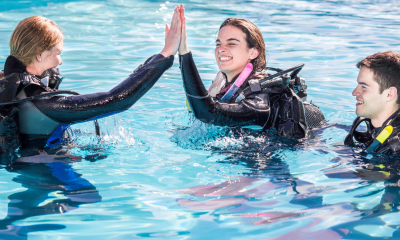
 News3 months ago
News3 months agoCharting New Waters; NovoScuba Goes Global with the Launch of their Revolutionary Dive Training Agency!
-

 Gear News1 month ago
Gear News1 month agoNew Suunto Ocean – a dive computer and GPS sports watch in one for adventures below and above the surface
-

 Marine Life & Conservation Blogs2 months ago
Marine Life & Conservation Blogs2 months agoBook Review: Plankton


